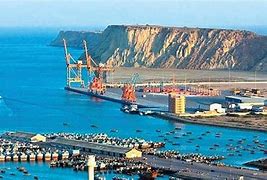As China prepares for the third plenary session of the 20th Central Committee of the Communist Party of China (CPC) in mid-July, the nation stands at a critical juncture in its journey towards modernization. This pivotal gathering is set to chart the course for comprehensively deepening reforms, a strategy that has been the driving force behind China’s remarkable transformation over the past four decades. China’s Reform Agenda: Charting the Path to Modernization will be the focus of this session, addressing the challenges and opportunities facing the country in its pursuit of continued growth and development. The upcoming plenum holds particular significance as it aims to shape China’s Reform Agenda: Charting the Path to Modernization. Historically, these sessions have been instrumental in creating systematic and forward-looking frameworks for the country’s development. As China continues to evolve, the decisions made during this session are likely to have far-reaching implications for both domestic and international observers.
Reform has been the cornerstone of China’s modernization efforts since the late 1970s. It has enabled the country to harness its vast population as a developmental asset, integrate into the global economy, and capitalize on historical opportunities for growth. The transformative power of reform lies in its ability to unlock the latent energy and vitality within Chinese society, propelling the nation to its current status as the world’s second-largest economy.
At the heart of China’s reform agenda is the dismantling of outdated systems, mechanisms, and institutions that hinder development. The rural household contract responsibility system reform serves as a prime example of this approach. This reform not only addressed longstanding issues in labor productivity but also safeguarded China’s food security by significantly boosting agricultural output.
Science and education reforms have played a crucial role in elevating China’s national modernization and global competitiveness. The reinstatement of the college entrance examination and the reform of national education in the late 1970s enabled China to cultivate the world’s largest pool of higher-educated talents within just a few decades.
Economic system reform has been the linchpin of China’s transformative change over the past 40 years. By addressing the limitations of the traditional planned economy, these reforms provided solutions to previously intractable issues such as resource bottlenecks, market absence, product shortages, and employment challenges. The revitalization of state-owned enterprises, the emergence of a thriving private sector, and the attraction of substantial foreign investment have all contributed to China’s economic dynamism.
Since the 18th National Congress, China has further refined its socialist market economy, establishing modern corporate systems and implementing various rural reforms. These include the separation of ownership rights, contract rights, and management rights, as well as the introduction of collective asset shareholding and the market entry of collectively-owned construction land.
In the realm of public services, efforts have been made to direct resources to grassroots levels, particularly in rural areas, to ensure a more balanced distribution of basic public resources and enhance the people’s sense of fulfillment. Governance reforms have focused on integrating legal, ethical, self-governance, intelligent, and political governance to improve overall efficiency.
However, as China enters a “deep water” zone in its reform process, it faces more complex and urgent tasks than ever before. The effectiveness of previous reforms is diminishing, necessitating second rounds of reforms to generate new momentum. The interconnectedness of different reforms has become increasingly apparent, with each reform constrained by the need for other systemic changes.
The imperative for reform remains strong, as it is essential to invigorate China’s development and provide new impetus for its modernization. Further comprehensive deepening of reform is therefore an inevitable topic for Chinese modernization in the new era. Only through continued reform can the vitality of all stakeholders, particularly individuals, be fully unleashed.
As China looks to the future, the upcoming plenary session is expected to provide decisive guidance on further deepening reform and advancing the nation’s modernization. The decisions made during this gathering will likely shape China’s development trajectory for years to come, influencing not only domestic policies but also the country’s role on the global stage.
The challenges ahead are significant, but so too are the opportunities. China’s ability to adapt and innovate through reform has been a hallmark of its success thus far. As the nation continues its journey towards modernization, the world will be watching closely to see how it navigates the complex landscape of economic, social, and political reform in an ever-changing global context.
The path forward requires not only bold vision but also careful implementation. Balancing the needs of various sectors of society, addressing regional disparities, and maintaining social stability while pursuing ambitious reforms will be key challenges for China’s leadership. However, if history is any guide, China’s capacity for transformation through reform should not be underestimated.
As the third plenary session approaches, there is a palpable sense of anticipation both within China and internationally. The outcomes of this gathering will provide crucial insights into China’s future direction and its approach to addressing the complex challenges of the 21st century. For a nation that has already achieved remarkable progress through reform, the next phase of this journey promises to be both challenging and potentially transformative, with implications that extend far beyond China’s borders.
Related Post:
Two Sessions 2024 to push China towards technological innovation, digital economy

















